– Wailea, Hawaii to Volcano, Hawaii –
We didn’t take any pictures today until we arrived on the Big Island. Not a single one. I’m a little surprised, as we usually make at least a token effort, but today we just didn’t. We started our day at 5am, as usual, and had time for a run before the airport. We then showered, had breakfast, packed up the last of our stuff, and were out of the hotel by 7am.
It was only about a 25 minute drive into Kahului, so even after we turned in the rental car, we were still pretty early for our 9:30 am flight. We cleared security and were sitting at our gate at least an hour before our scheduled flight time. In the end, the flight was even 10 minutes late. It’s hard to accept the idea that at these tiny airports, we can roll up 45 minutes before our flight and still make it with plenty of time.
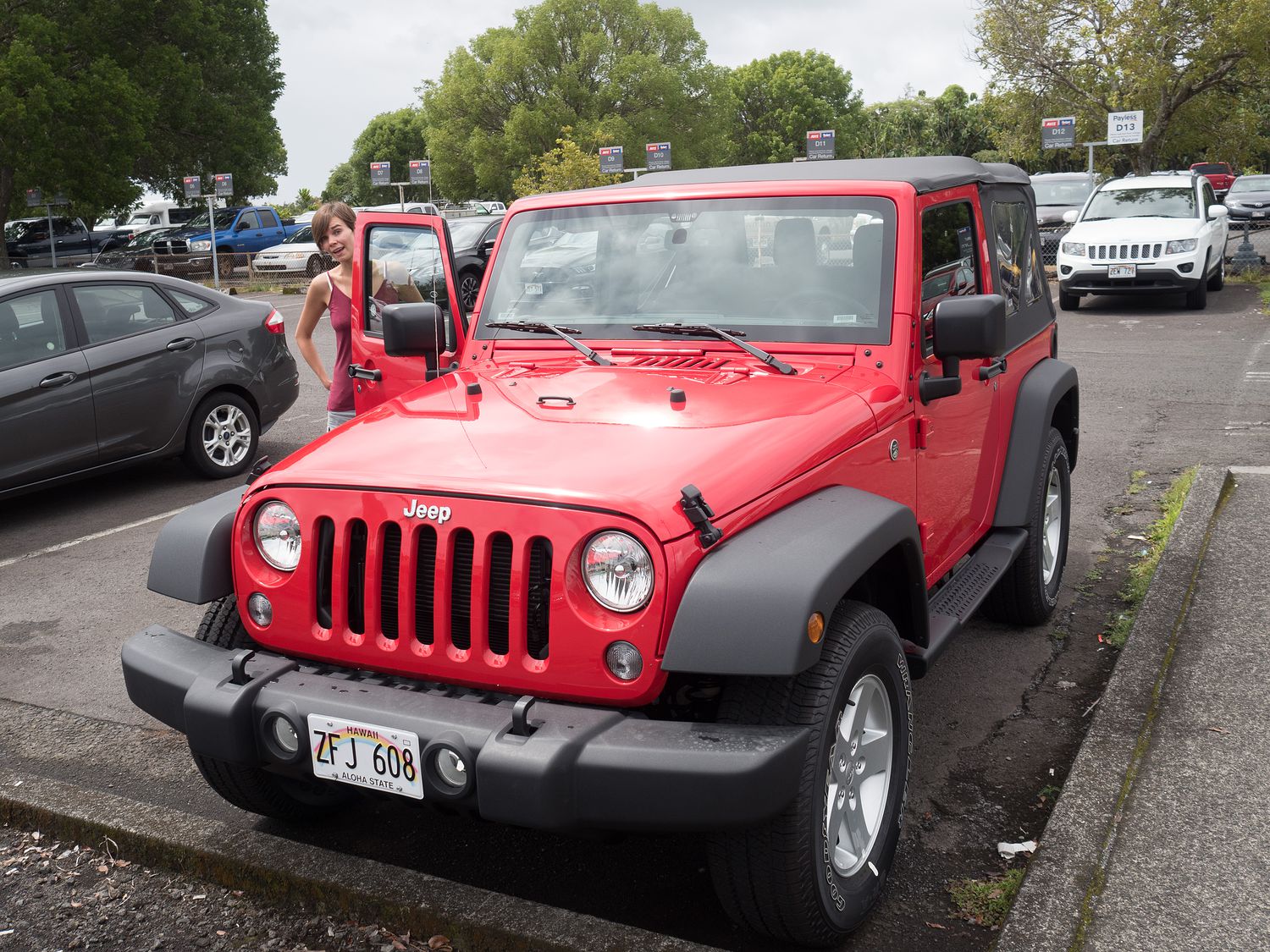
I think I mentioned on one of the previous day’s posts, but Mark has been suffering from Jeep envy on the last two islands. He’s been talking to me about requesting on upgrade to a 4-wheel drive, so we can do a little off-roading. I was willing to entertain the prospect, but as it turns out, there was no upgrading involved.
When we came out of the airport in Hilo, we walked over to the rental area, and the booth for our rental company was empty. However, we could see the paper and keys for our reservation on the wall behind the desk, and I pointed out to Mark that the key with his paperwork was a Jeep key. A few minutes later, our suspicions were confirmed. They didn’t have the little car we’d originally rented available, so was a 2-door 4×4 Jeep ok instead? No price change or anything. You can imagine how excited Mark was for this unexpected upgrade. I should also mention that our Jeep had a grand total of 3 miles on it. So it is totally brand new.
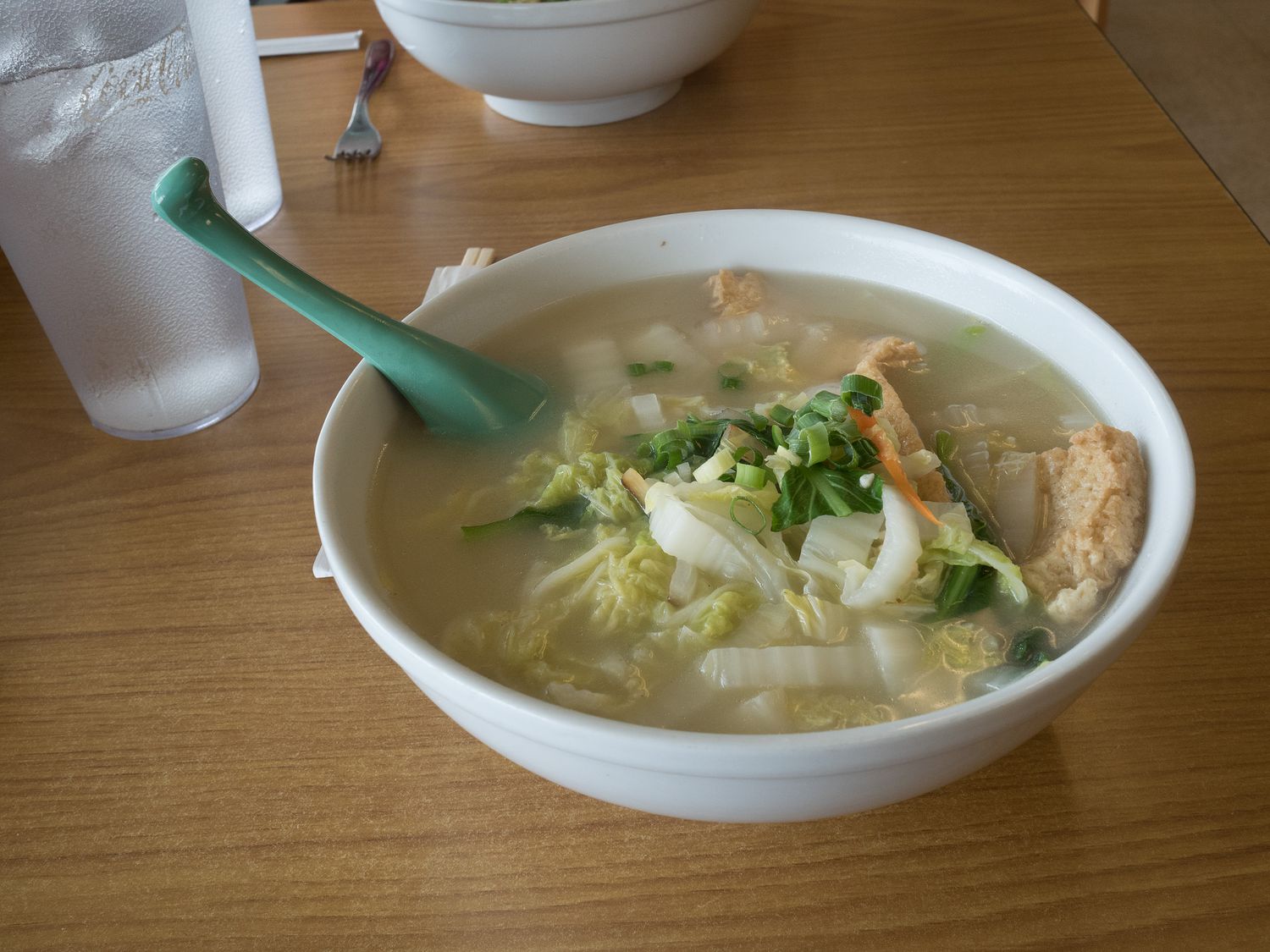
The only problem with our Jeep is its soft topper, which means we can’t leave anything safely in the vehicle, since we don’t have an enclosed trunk. That made it a little difficult to go anywhere in Hilo, since we’d have to leave our bags sort of exposed. We didn’t have much choice, though, so we did what we could to mitigate the risk.
We stopped first at a McDonald’s for our tea, then at Genki Ramen House for another bowl of veggie ramen. It’s nice that the vegetarian ramen is so ubiquitous, but we’ve had it three times. It’s a good thing that we like noodles. After that, we also stepped into a grocery store next door to grab some crackers and some cookies to keep in our car for snacks. Mark had a can of Pringles in his bag on the flight over, but the lid pulled off somehow and the whole front pocket of his carry-on was covered in chips. He was very sad when he wanted a snack on the plane.
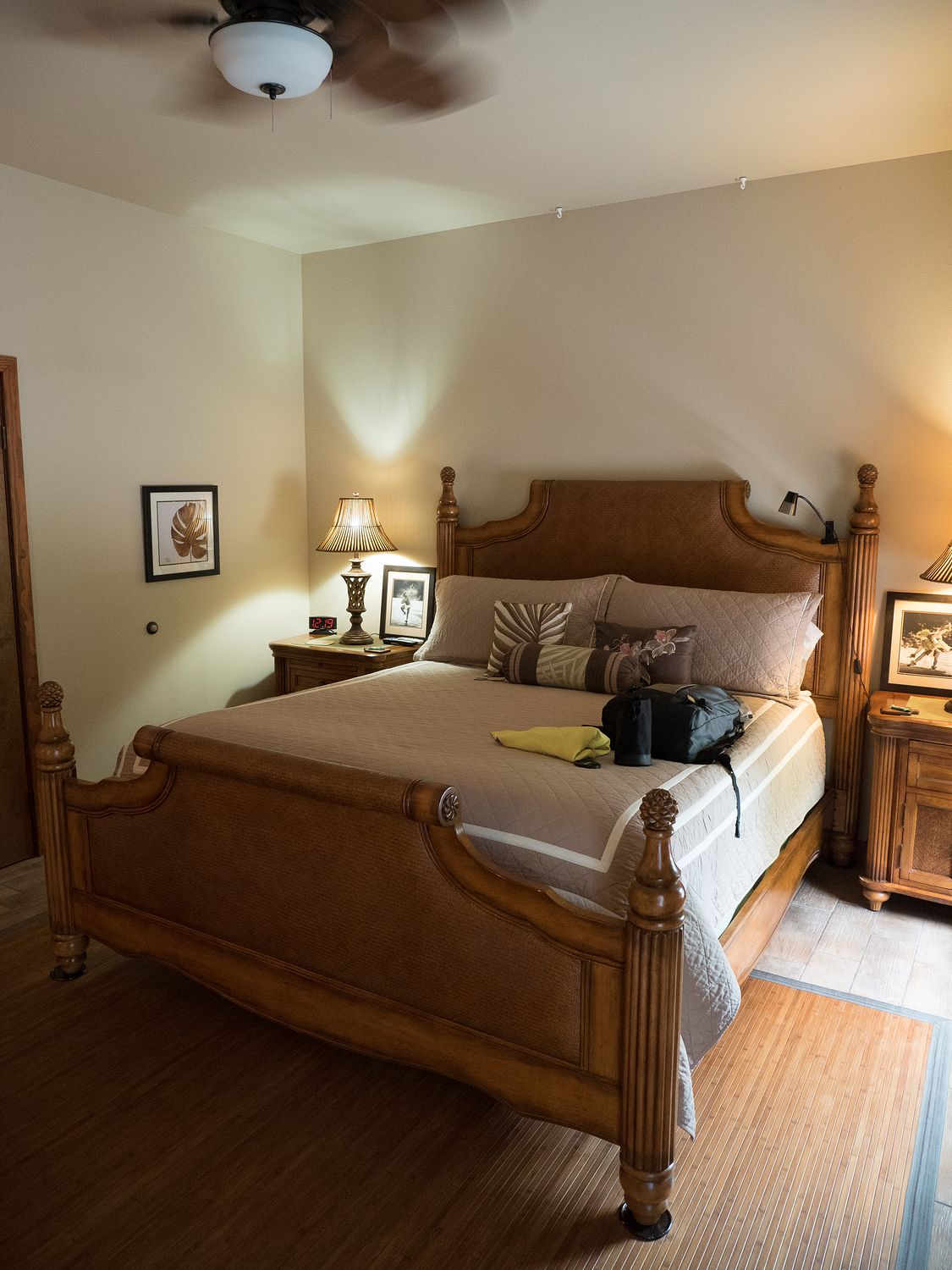
Since we really couldn’t leave our bags in the car with the soft topper, we decided to stop by our hotel to see if we could store them there until our room was ready. It turns out that our “hotel” is actually a Bed and Breakfast, which we didn’t realize until we arrived. It only has two rooms, each with a bedroom, bathroom, and half-kitchen area. We don’t have anything to cook with or a stove or the like, but we do have dishes and silverware and a microwave and toaster.
Our hotel, Volcano Dancing Ferns, is actually really nice. It’s beautiful, as well. The bed is a king, we have quite a variety of breakfast items that have been provided for us in the room, and the bathroom is pretty and clean. Mark has a coffee pot and we have nice internet. What more can you ask for? On top of that, it is very quiet back here.
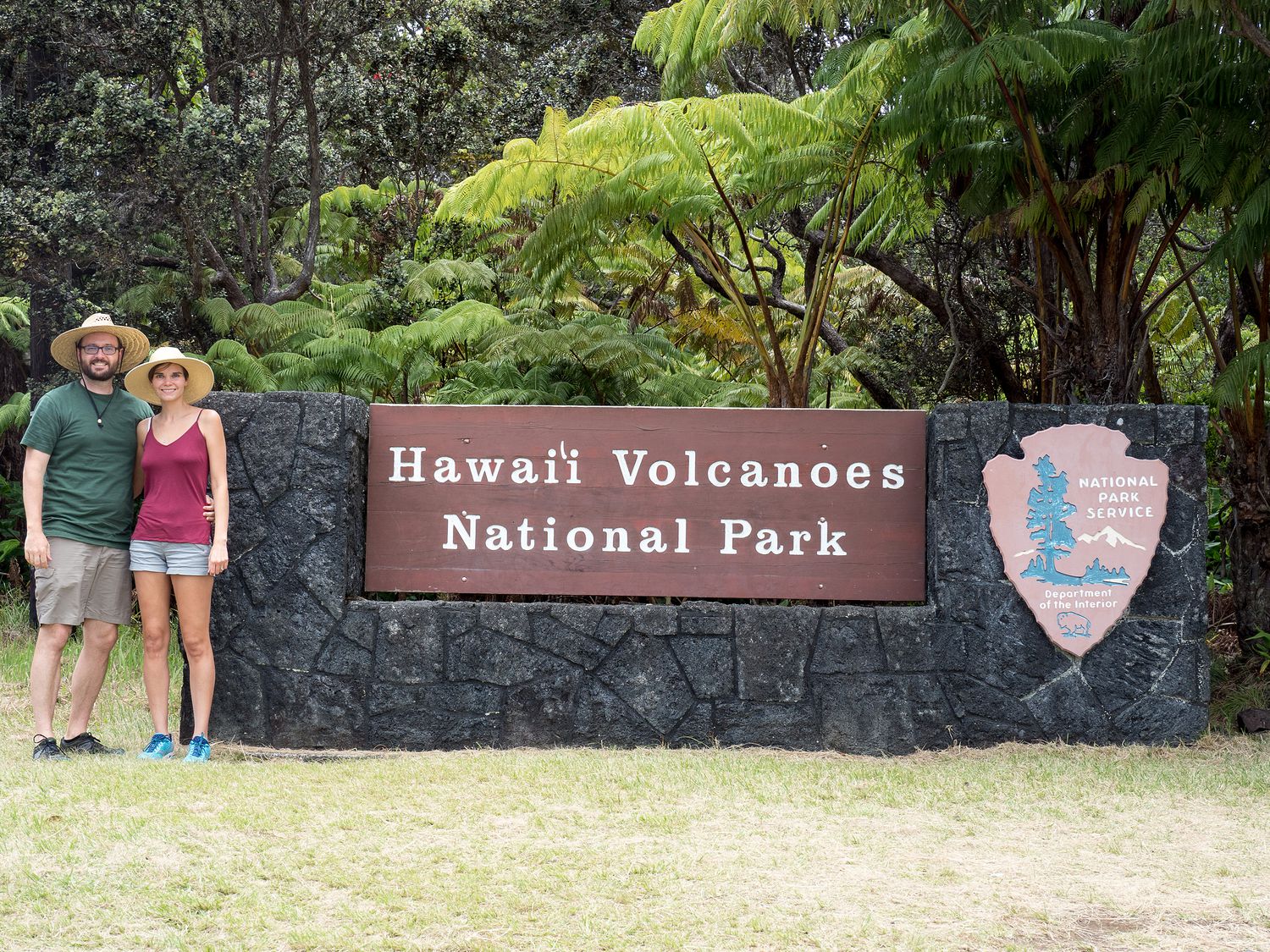
Did I mention our hotel is in the tiny town of Volcano? Volcano is right on the outskirts of Hawaii Volcanoes National Park, so after we’d unloaded our stuff and checked out our room a bit, we went ahead to the national park. It’s number 52. I know you’re keeping count, too.
It was also at this point that we started having a bit of trouble with our Jeep. It kept telling us “no fuse” and the air conditioner and clock were having difficulty working sometimes. I set to work googling the issue and discovered that there’s a certain fuse that car dealerships will remove to keep the battery from being drained while the car is on the lot. That meant it had probably just been put back in. I found a picture and showed it to Mark, thinking that might be the problem.
When we stopped at the visitor center for the national park, the key fob wouldn’t lock the door, and that practically confirmed it. Mark popped the hood and found the fuse box, I showed him my photo, and we reseated the fuse. The key fob worked immediately, and we haven’t had any problems since. We were so proud to have solved our little problem ourselves, even though it was clearly a simple one. We aren’t really car people. Me, especially, but I am awesome at googling problems and finding solutions, and Mark knows enough about cars to actually put the solution into action. Day saved.
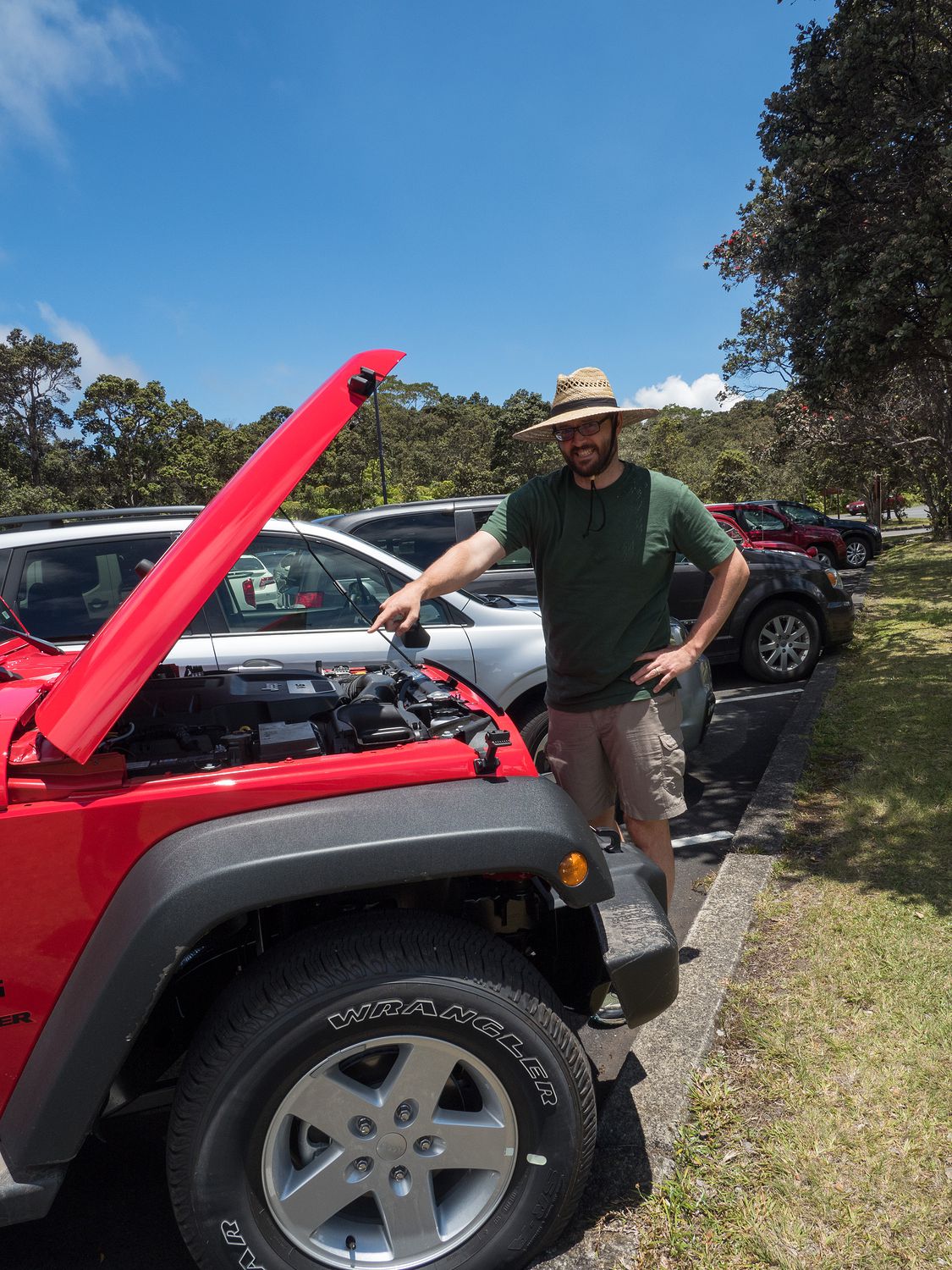
It’s $25 to get in Hawaii Volcanoes, and the first thing that you learn upon entering is that the Crater Rim Road, which used to circle the volcanic crater that makes up the heart of the park, is mostly closed. It is closed because Kīlauea, the volcano at its center, has been spewing dangerous sulfurous gases across the road. Hawaii Volcanoes National Park has two big volcanoes: Kīlauea and Mauna Loa. They are both active.
Our trip began with a walk through the visitor center, where we learned where we could and couldn’t go and what would be interesting to do. There’s not a lot of roadway in the park with the rim road and the road out to the active lava sites at the bottom of the park closed, so we had to make the most of what we could actually get to.
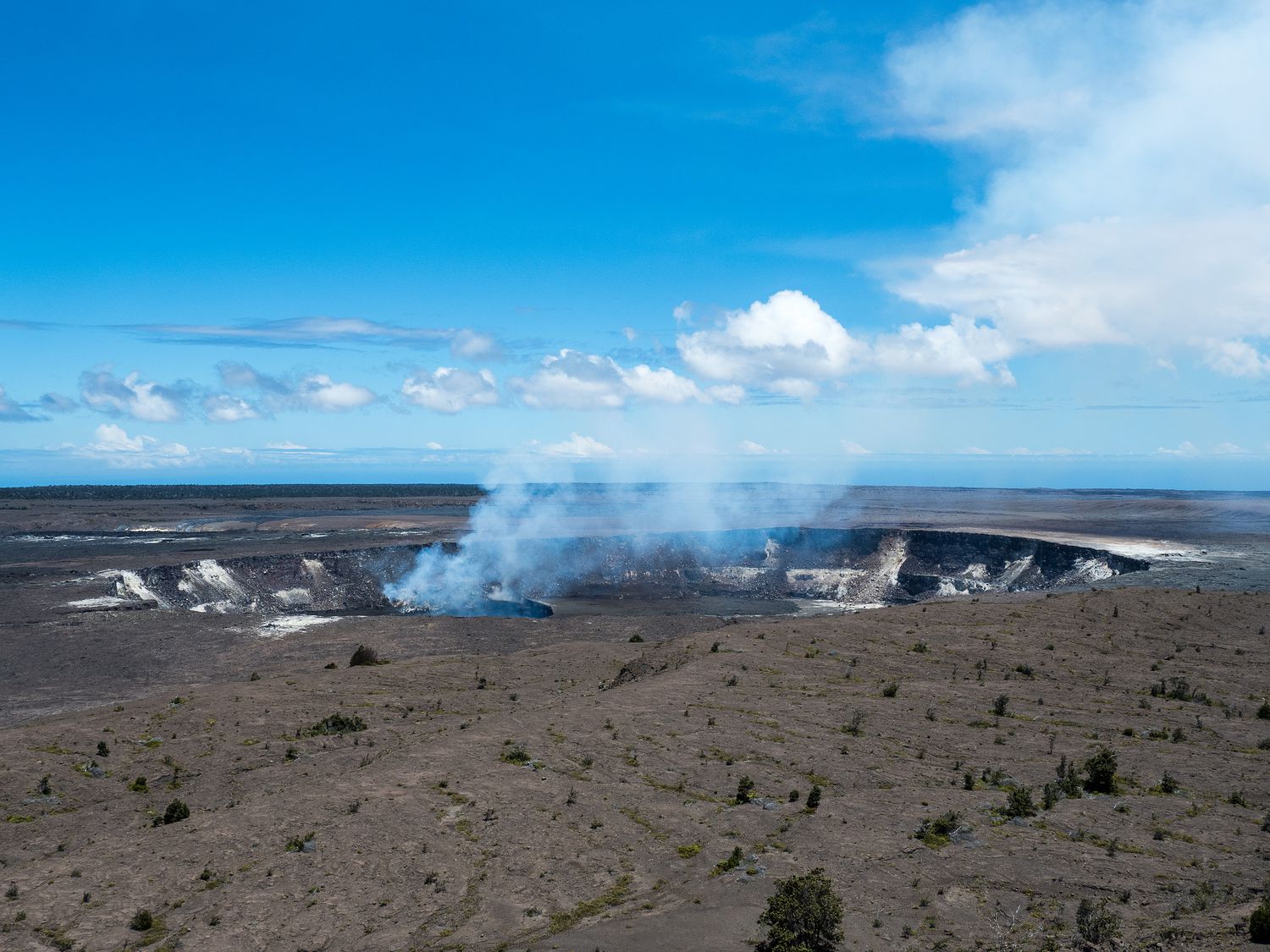
After the visitor center, we drove back to check out the Jaggar Museum, which has lava rock specimens and displays featuring the history of the park and the culture surrounding it. The Jaggar Museum is as far down the Crater Rim Road as you can go on that side.
We also stopped by the steam vents, which are kind of fun. It’s exactly what it sounds like: vents where steam escapes from the heat from the volcanic activity below. I thought it would be sketchy to stand over them and look down, but after I watched several other people do it first, I decided that they clearly hadn’t burned their faces off, so it was worth a look. “Steam” vents sound hot, so I think I should be forgiven for assuming you shouldn’t look down into them.
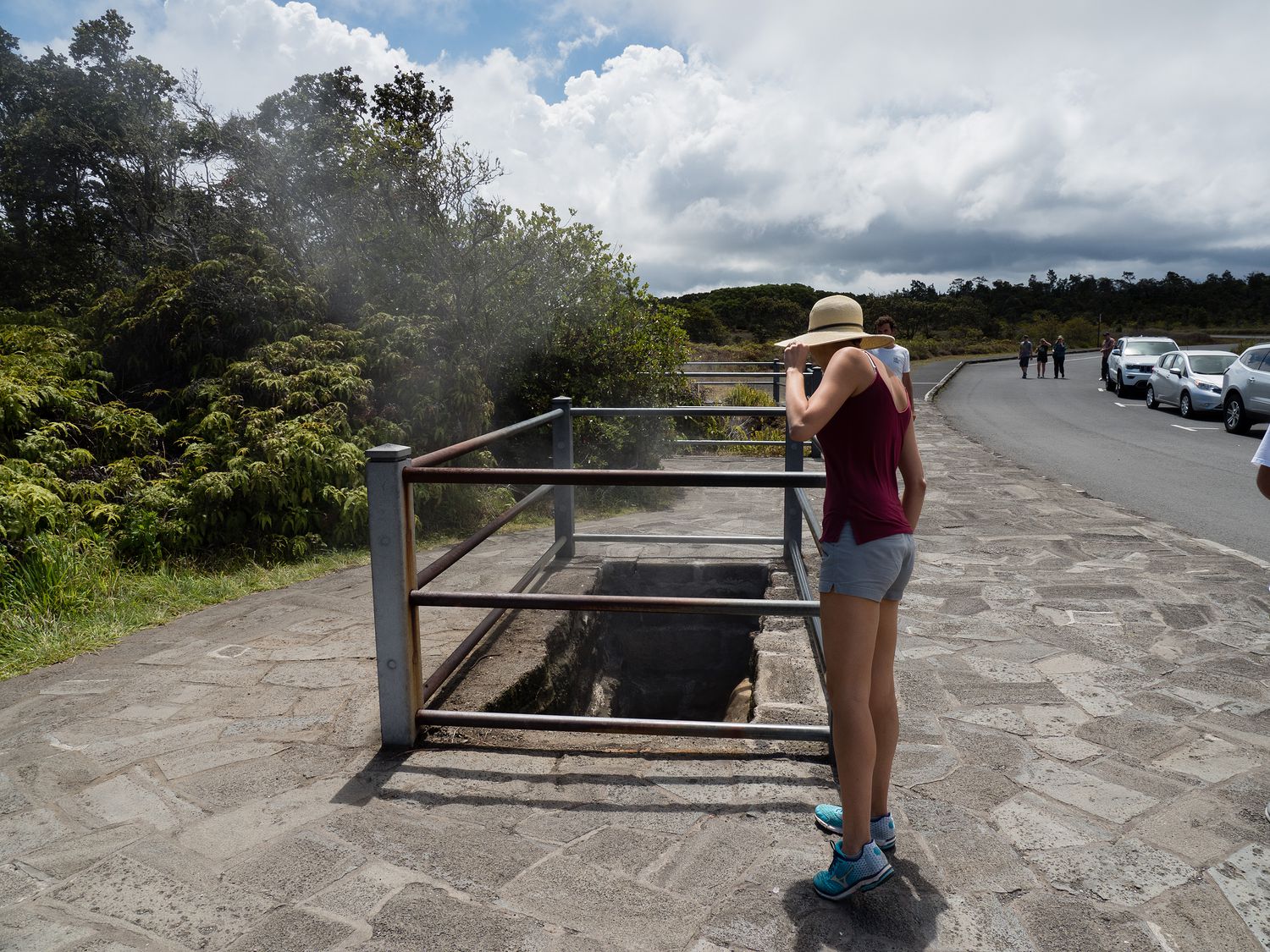
With that side of the road pretty well completed, we turned over Jeep down the Chain of Craters road, where we first stopped at the Thurston lava Tubes. Parking here was a little difficult with all of the people, but we lucked into a spot without too much effort and set off to explore the tubes. According to the internet, a lava tube is a channel where lava flows through during an eruption. This one obviously doesn’t have anything flowing through it right now. Instead, it just looks like a cave.
They are having issues with the light in the tubes, so we had to use our iPhone flashlight for a little while to make it through. Luckily it is short, and they do have emergency lighting up, so we got to see most of it reasonably well. The lava tubes were quite a bit wetter than I expected, with water dripping down through my hat as we made our way through. They mostly just look like a cave. I was expecting the sides to be a lot rougher, but they were really rather smooth.
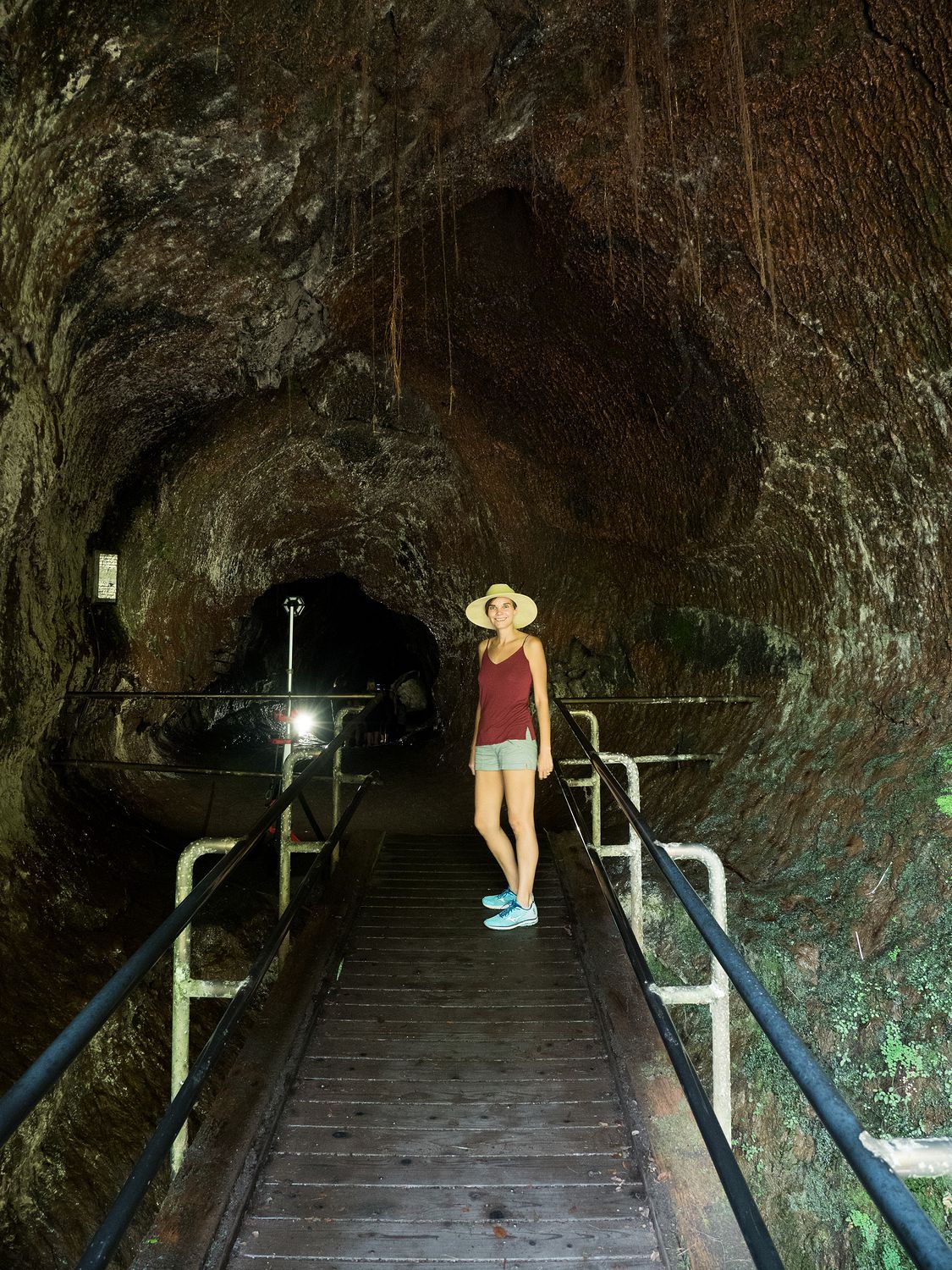
Past the lava tubes, we continued down Chain of Craters Road to see, well, the chain of craters. There are several along the 19 mile route, which currently terminates at the Hōlei Sea Arch. I think we pulled off about half a dozen times to look down into small craters formed by various means from the volcanic activity.
What’s interesting about the lava fields out this way is that most of the area was formed in the 1960s and 1970s, not a thousand years ago like you might expect. The lava past the end of the road has been flowing in that area since 1983. The road physically continues past the point where you stop at the sea arch, but people aren’t allowed to drive on because of the lava flow. Oddly enough, you can walk over to the active lava sites, which are 10 miles from the sea arch stop. Alternately, you can come in on the other side outside of the park, and then you only have to hike 4 miles. Mark is considering having us do this, so we will see how that turns out.
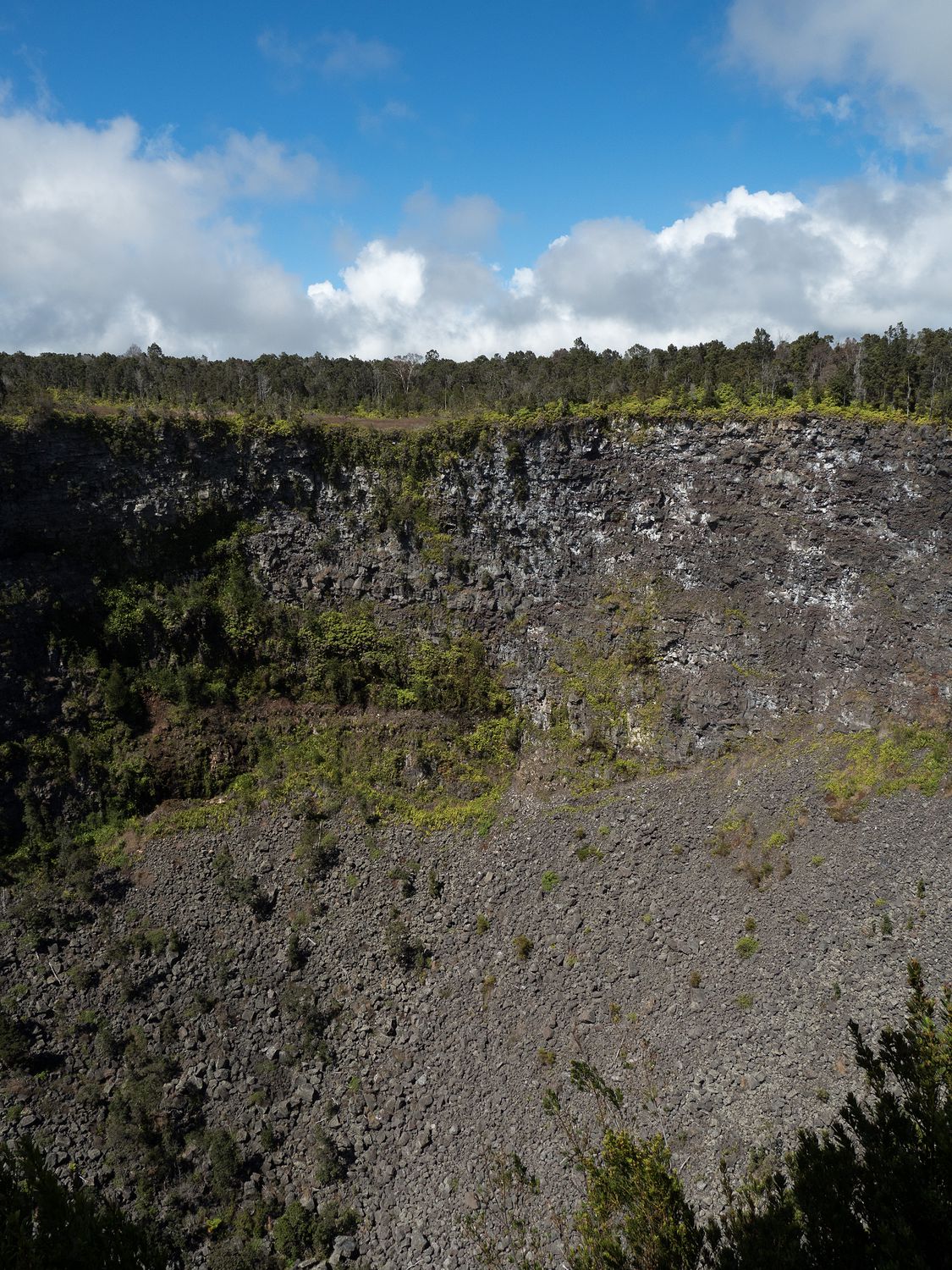
As you start to come back down closer to sea level, the terrain changes a bit, and you are suddenly driving through the 971 and 1972 lava fields. Most of the volcanic rock in the park is basalt, according to signs in the museum, and it has formed out here in frequently shiny layers that look like some alien landscape. It’s a really cool view, and fun to walk across them where the trails allow.
There are some petroglyphs out this way, which would’ve been cool to see, but it’s a 3/4 mile hike out to them, and with the temperature reading in our Jeep telling us it was a warm 95 degrees, and us having left our sunscreen back at our room by accident, we decided that the petroglyphs were unfortunately not worth the walk.
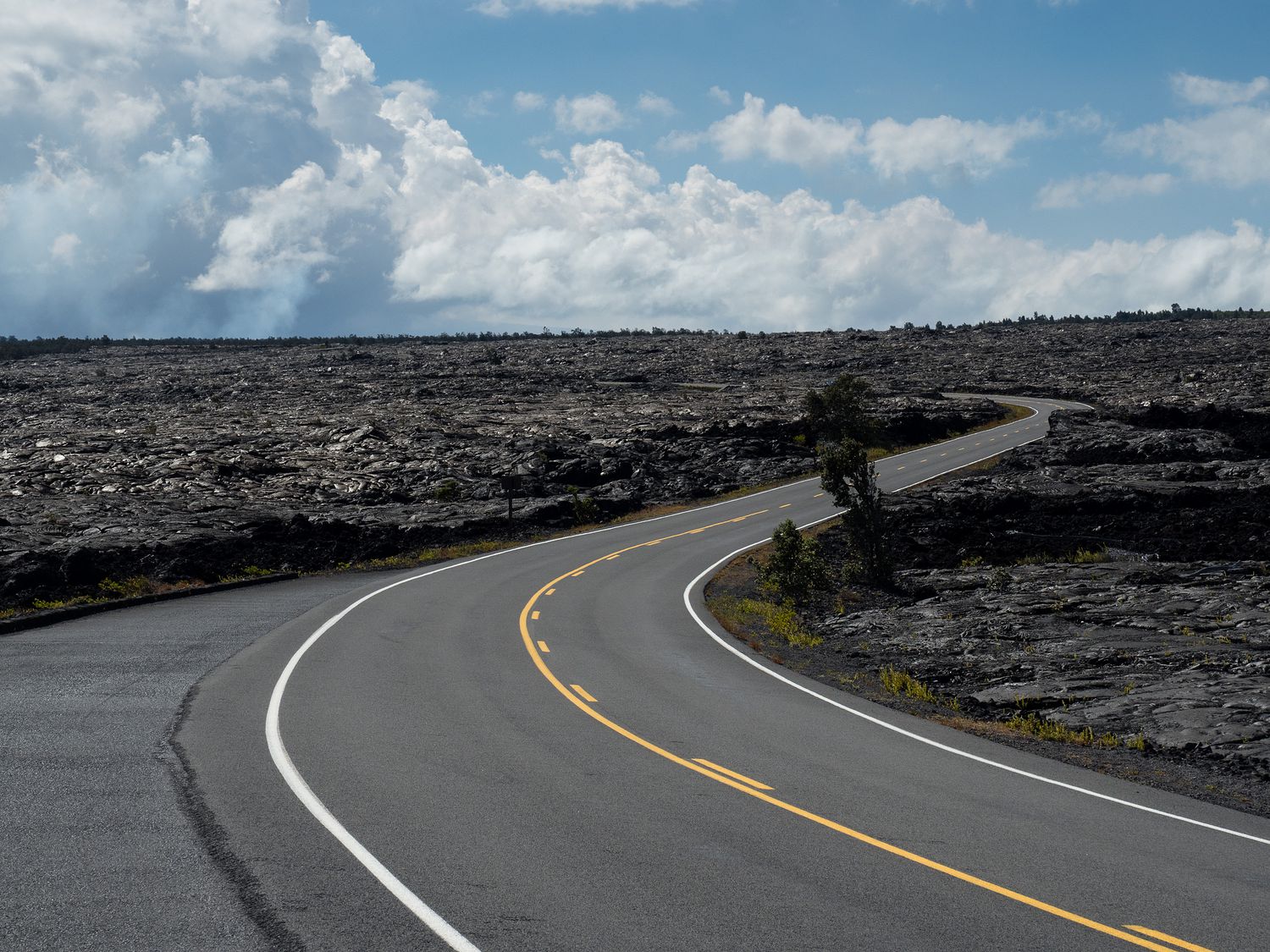
We did stop at the sea arch, of course. It’s at mile 19, and the road is blocked off just beyond the restrooms there. There’s a little store there, as well as a ranger station, and of course the overlook for the sea arch. The arch was formed by the deterioration of the cliff along the coast. Its lava is harder than the lava that used to surround it, so that rock wore away first, leaving the arch behind. It was formed in the last 100 years, and will eventually crumble as the ocean inevitably wears it away.
It’s a lovely sight, but a bit difficult to see, if you know what I mean. The viewing area forces you to lean out over the cliff to even see it, so you can just barely catch sight of the side of it from the area where visitors are allowed.
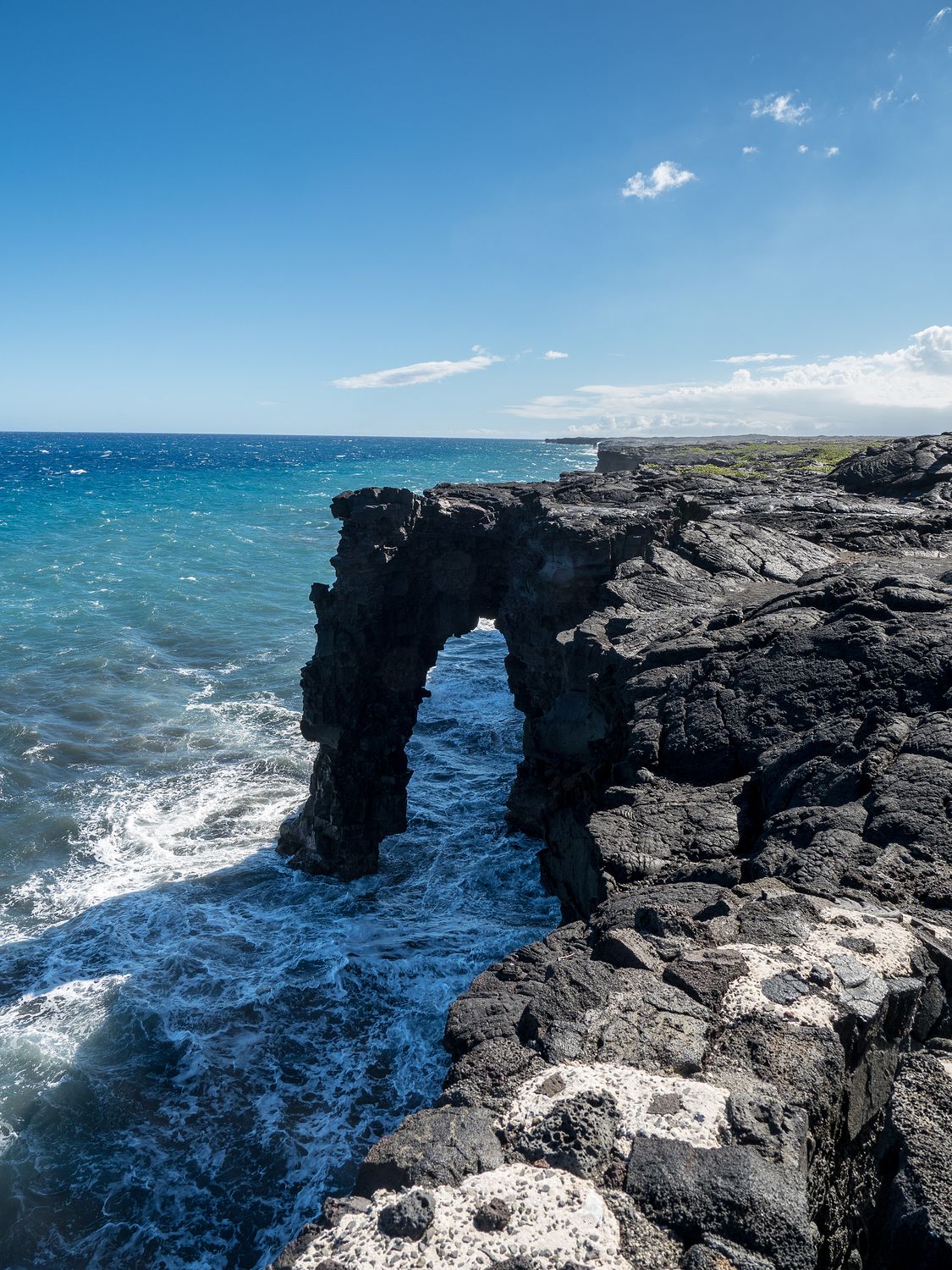
The little store next to the parking area for the arch had some juices Mark has liked earlier in the trip, so we stopped by for a drink and happened to find a T-shirt for me. I was glad to find it, since the ones in the visitor center were all the same and none were smaller than 2X. That wouldn’t have worked out at all.
The juices were a nice bonus, since we’d finished our teas on the way down and were starting to feel parched. The climate in the park shifts from rainforest, to desert, to breezy beach in less than 20 miles, and it changes temperature with every shift. We saw temperatures today as high as 95, and as low as 68 as we were leaving this evening. Nothing that warranted a jacket, though.
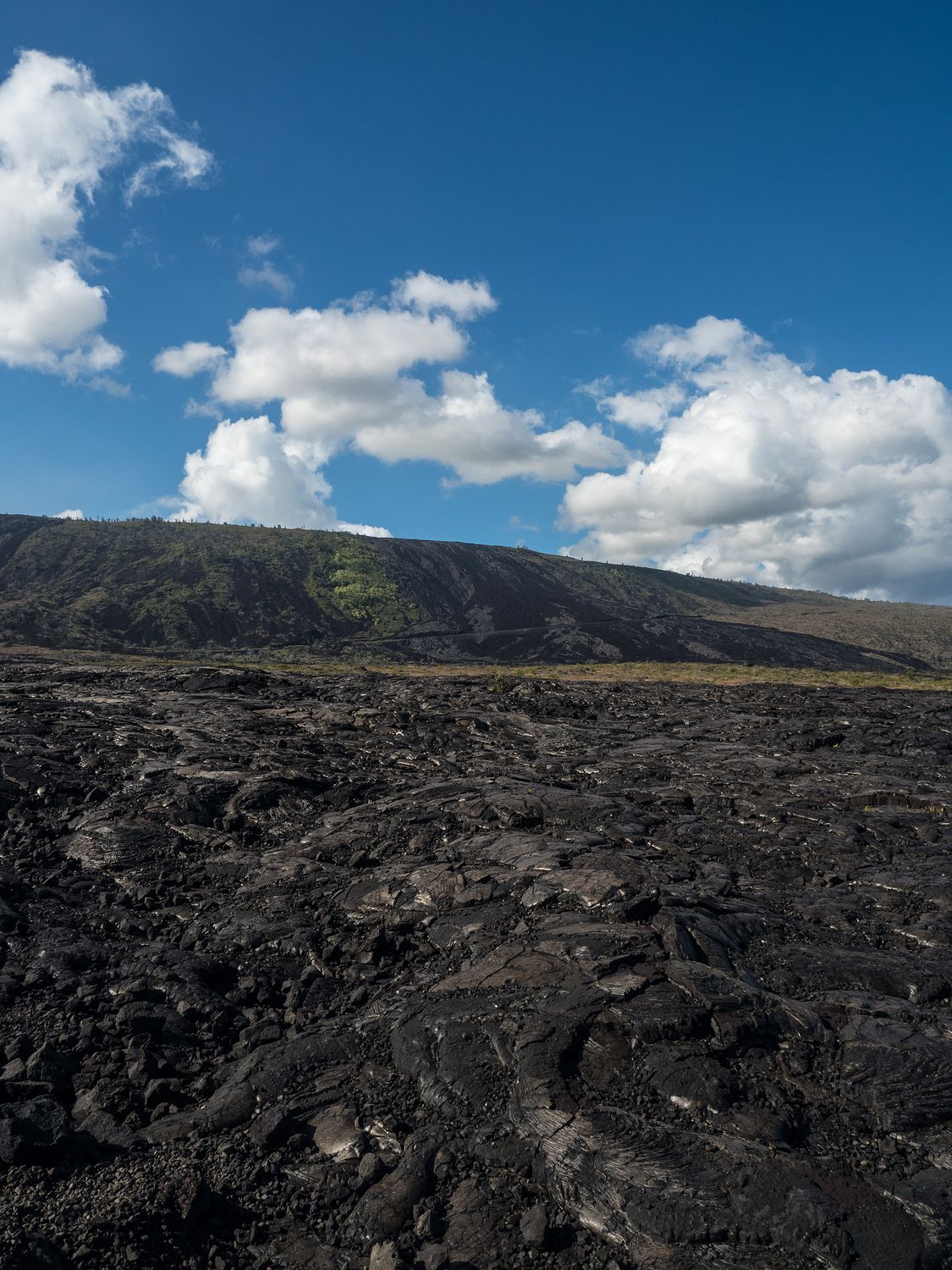
Our final stop in the park led us down a little side road called Hilina Poli Road, which we thought might be fun, and it was only 9 miles out, so we turned that way. Unfortunately, it was a ridiculously curvy nightmare, and I got carsick, and we didn’t even get any great views at the end, when we reached the “overlook.” Overrated is more like. I was sick for 30 minutes after that. Ugh.
We also took a few photos of some skittish birds we saw along the road, thinking they were the elusive Nēnē, or Hawiian Goose, which we’ve seen dozens of signs warning us to watch out for. They are endangered, so it’s important to protect what’s left. Unfortunately, after I checked our bird sighting against our critter guide on our park map, I discovered we hadn’t seen a Nēnē at all. I don’t know what it is, actually.
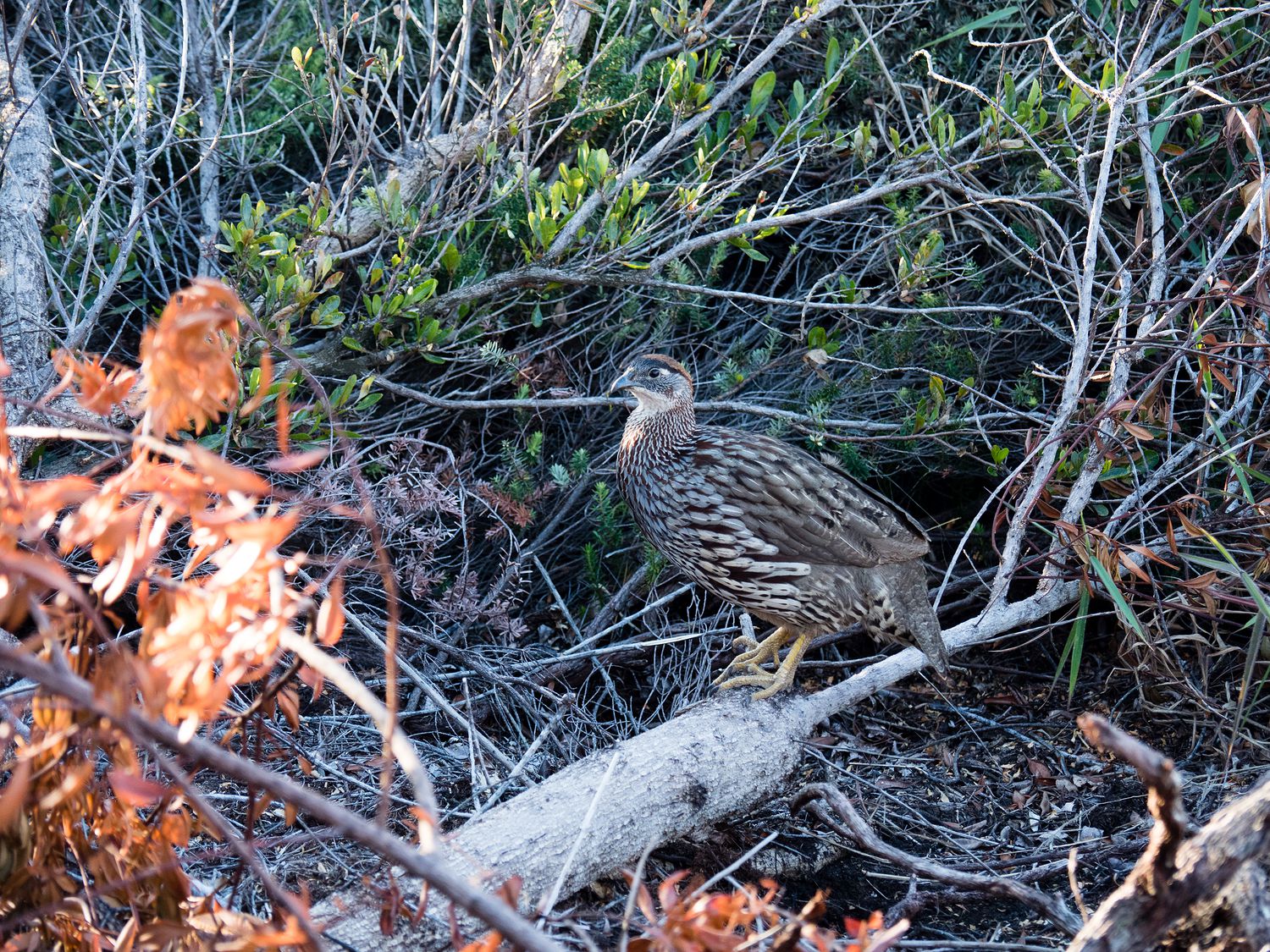
When we wrapped up in the park, it was right around 6pm. We drove the couple of miles over into the little town of Volcano, which only has about 5 restaurants. We ended up picking the Lava Rock Cafe, where we had veggie burgers and fries. They were fine, but they were nothing special, and not worth the $12.95 we had to pay for them. I hate tourist prices.
Our hotel is only a few more miles down the road from there, and on the way, Mark practiced putting the Jeep into 4-wheel drive for fun on the dirt and gravel road leading back to it. We also spotted a javelina on the road, which, much like most other places, is an invasive species here. He wasn’t even gracious enough to let us get a photo.
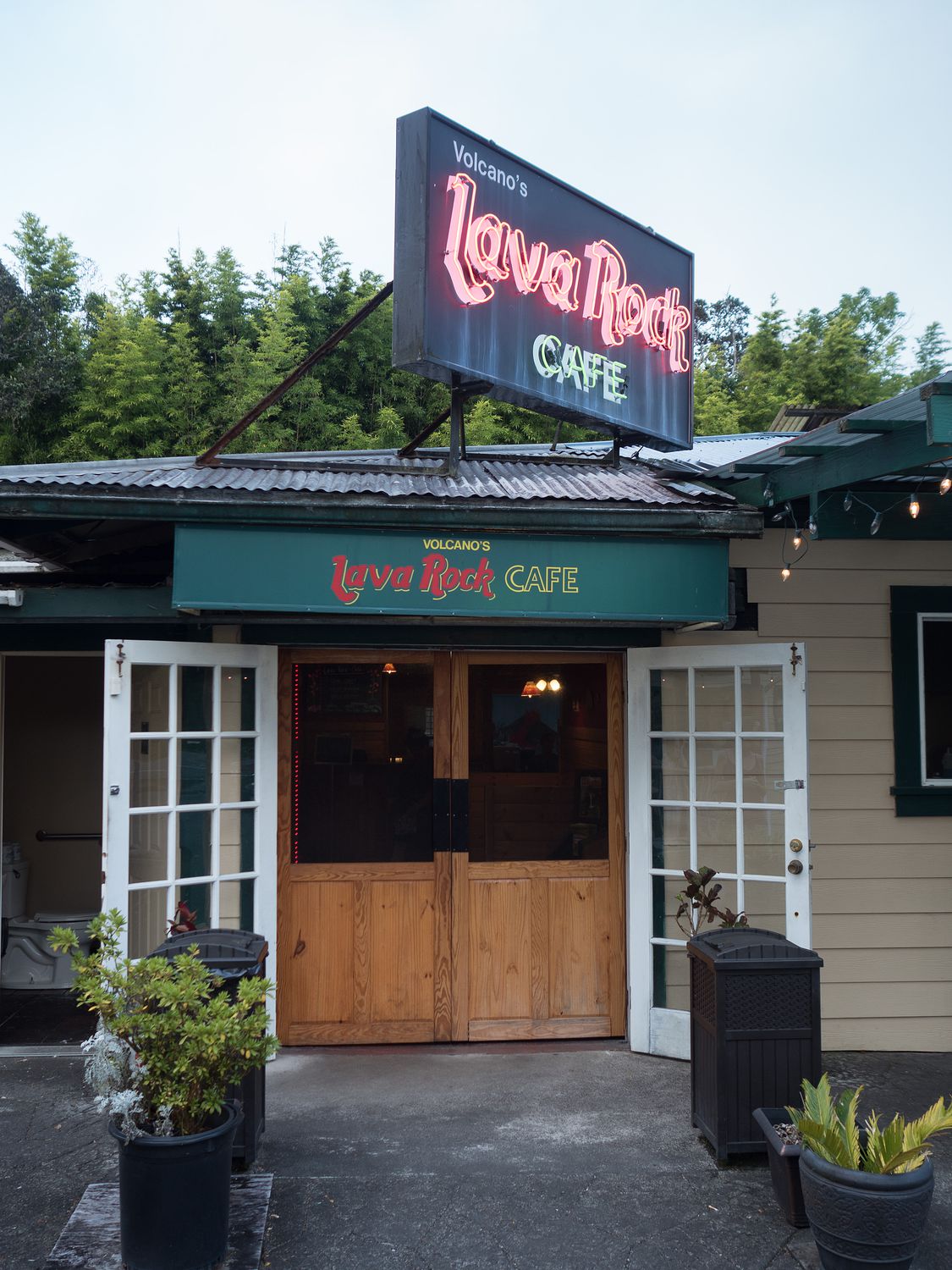
Tomorrow I think we are going to get up early and hike to a green sand beach a ways down the coast, weather permitting. After that, we’ll make one of a smaller loops around the island in our effort to cover it all before we have to leave. We’re really winding down our trip here, but I still think the Big Island will be the best one.
– Trip Total : 854 miles –
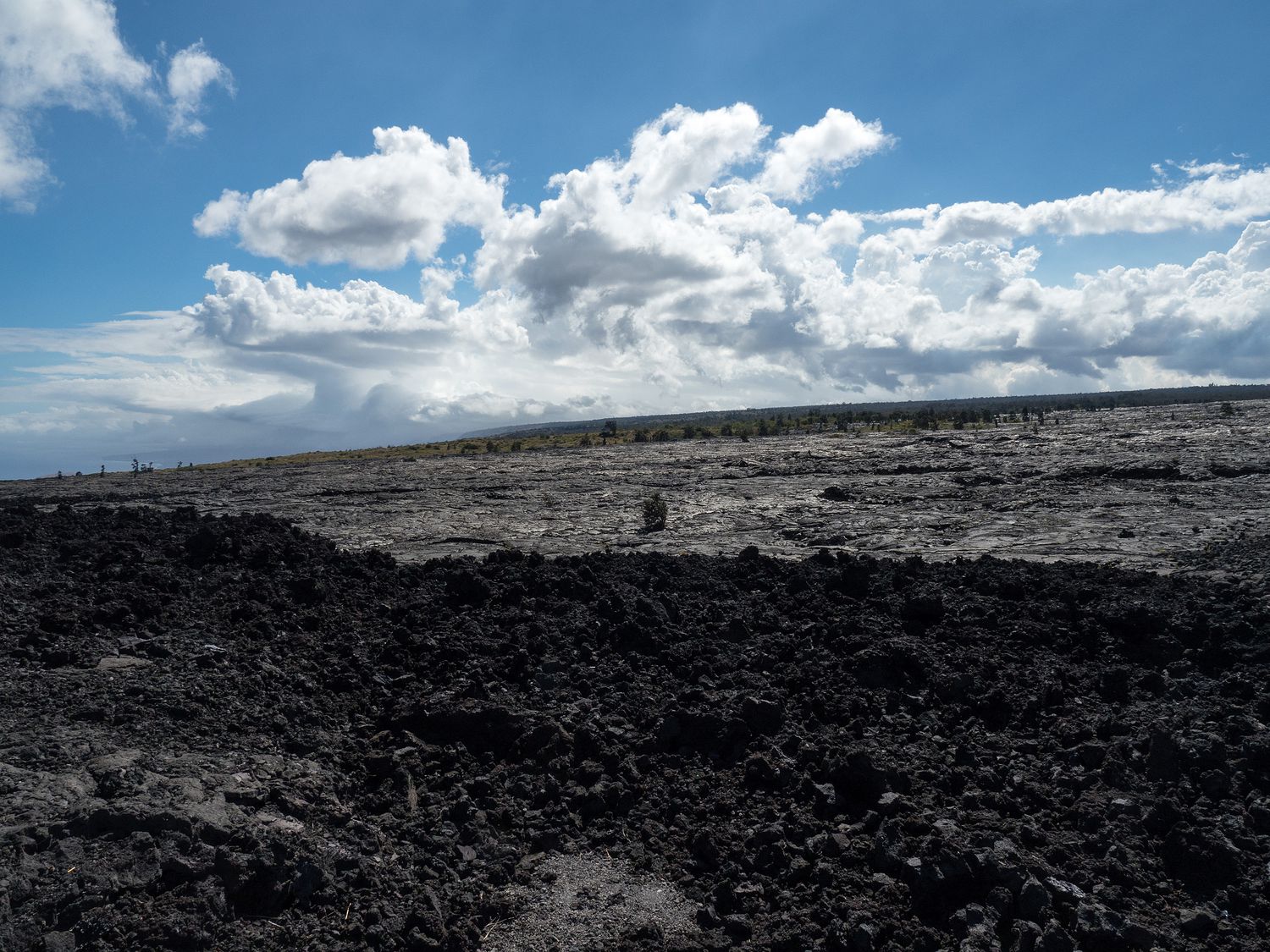
I think your bird may be an Erckel’s francolin. See photos here on Wikipedia.
https://en.m.wikipedia.org/wiki/Erckel%27s_francolin#
The Erckel’s francolin (Pternistis erckelii) is a species of bird in the family Phasianidae. It is native to Eritrea, Ethiopia, and Sudan. In 1957 the species was also introduced to the Hawaiian islands.
That certainly looks right!